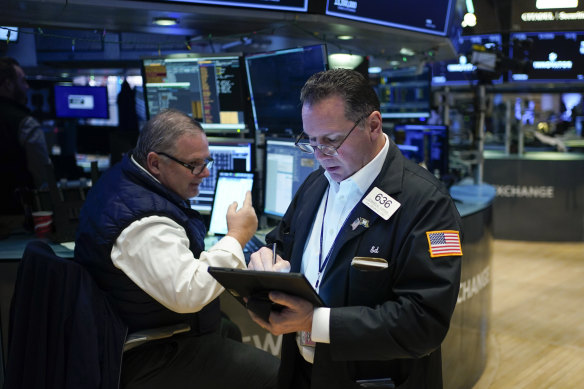Big miners shine but ASX edges lower
By Najma Sambul
The Australian sharemarket has dipped with gains in BHP and Fortescue offset by losses for energy stocks, as traders digest a busy day of corporate earnings reports and announcements.
The S&P/ASX 200 edged slightly lower, down 2 points to 7348.8 at 1.15pm AEDT on the back of a mixed lead from Wall Street.

Lithium miner Pilbara Minerals was down 4.62 per cent by lunchtime while Meridian Energy had shed 1.6 per cent. Big miners BHP and Fortescue were in the green, both up close to 1 per cent in morning trade. Rio Tinto was in the red.
A2 Milk’s share price fell as the company seeks approval to sell infant formula in China and reported its revenue was up 18.6 per cent to $NZ783.3 million ($711 million), partly driven by sales in China and the US, which grew 54 per cent and 61.8 per cent, respectively. A2 Milk’s shares were down 8.1 per cent to $6.52 on Monday morning.
Meanwhile, bedding retailer Adairs delivered record sales with a 34.1 per cent jump to $324.2 million for the first half of the 2023 financial year, while profits were up by close to 24 per cent to $21.8 million. Its share price was up 0.84 per cent to $2.39.
Financials lifted the bourse, with fuel giant Ampol shares 1.67 per cent higher as the company reported record earnings of $1.32 billion, prompting the company to issue a special dividend of 50 cents.
Insurer QBE stocks gained 2.95 per cent, while big banks CBA, NAB, ANZ and Westpac were in the green. Investment management company Challenger’s shares shot up 2.17 per cent during midday trade.
In the US, the S&P closed a rocky week on Friday with a 0.3 per cent loss, the Dow Jones added 0.4 per cent while the Nasdaq composite fell 0.6 per cent.
Wall Street stocks have hit turbulence in February after shooting higher in January with hopes that cooling inflation could get the US Federal Reserve to take it easier on interest rates and that the economy could avoid a severe recession. Reports recently have shown more strength than expected in everything from the job market to retail sales to inflation itself, raising worries that the Fed will have to get tougher on interest rates.
That’s forced a sharp recalibration on Wall Street as investors move their forecasts for rates closer to the “higher for longer” stance that the Federal Reserve has long been espousing. The hope is that high rates can drive down inflation, but they also hurt investment prices and risk causing a severe recession.
Economists at Goldman Sachs added one more rise by the Fed in June to their forecast, meaning they see its key short-term rate ultimately rising to a range of 5.25 per cent to 5.5 per cent. That rate was at close to zero a year ago, and it hasn’t topped 5.25 per cent since the dotcom bubble was deflating in 2001. It’s currently at a range of 4.5 per cent to 4.75 per cent.
The fear is that if inflation proves stickier than expected, it could push the Fed to get even more aggressive than it’s prepared the market for. Such movements have been most clear in the bond market, where yields have soared this month on expectations for a firmer Fed.
The two-year Treasury yield topped 4.7 per cent in the morning, up from 4.62 per cent late on Thursday and from less than 4.1 per cent earlier this month. It later pulled back to 4.61 per cent. It has recently approached its heights from November, when it reached its highest point since 2007.
AP
The Market Recap newsletter is a wrap of the day’s trading. Get it each weekday afternoon.
Most Viewed in Business
Source: Thanks smh.com